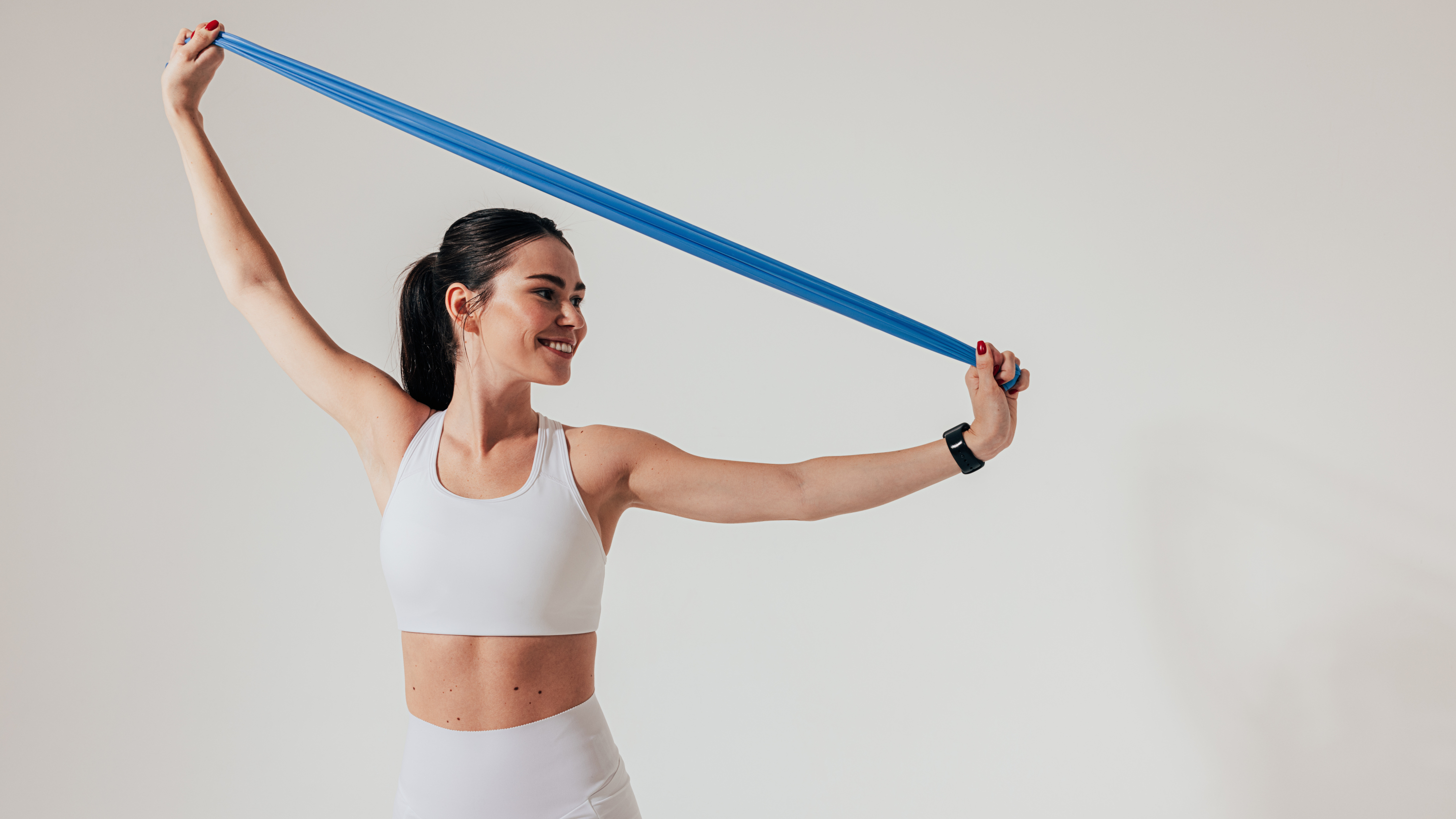Your stiff shoulders could be holding you back — here's how to instantly relieve tightness in just 2 minutes
Instantly relieve upper-body tightness in just a couple minutes

You don’t have to live with tight shoulders, and if you want to move freely day-to-day or improve your technique in the gym, you shouldn’t accept it as your fate.
Alongside my job as a journalist, I’m also a personal trainer; it’s my job to get people moving, and well. Poor shoulder mobility doesn’t just increase your risk of injury; it can impact your movement mechanics as well. If your shoulders can’t move properly, your posture can take a hit, and you might even have limited range of motion during exercise.
Unstick them in just two minutes using this one exercise — you’ll just need one of the best resistance bands for mobility routines. Here’s how.
How to do shoulder dislocations
Granted, the name doesn’t exactly sell the exercise, but this is one of the best shoulder exercises for increasing mobility around your shoulders and relieving tension. I start every warm-up with this exercise before upper-body workouts, and it’s a staple in my dad's exercise routine and mobility program.
- Stand with your feet hip-width apart or kneel
- Grip a band using both hands and an overhand grip
- Start with the band against your thighs, then slightly pull the band apart to create tension
- Raise the band overhead and slightly shrug your shoulders. Drive the band all the way behind you, pulling against it throughout
- Pause when the band reaches your butt, then reverse the motion and lift the band overhead back to the starting position.
The band you choose is up to you — a thicker band will make the exercise more challenging, whereas a thinner band creates less tension and resistance. Your grip also matters; a narrower grip will make dislocations harder, whereas a wider grip gives your shoulders more space and is better suited for beginners.
I commonly see people do two things when performing this exercise: arching the lower back and twisting the upper body. Don't compromise your form just to lift the band overhead; remove your ego and walk your hands further apart or choose a different band.
Keep your core engaged and slightly tuck your pelvis toward you; avoid pushing your hips forward or leaning back, as this will place pressure on your lower back. Once you've positioned your torso correctly, avoid twisting your body to get the band up and over and focus on only moving your arms and shoulders.
Get instant access to breaking news, the hottest reviews, great deals and helpful tips.
For practice, see if you can perform dislocates against a wall with your entire back pressed against it, including your lower back and upper glutes. You won't be able to bring the band behind you, but you'll be able to focus on the initial phase of the exercise and slightly shrugging the band into the overhead position.
Notice what happens when you press the band into the wall. Does your back lift away from the wall? If so, move your hands further apart.
What are the benefits?
Shoulder dislocations strengthen your shoulders and improve range of motion. When performing weightlifting exercises like the overhead press, squat, snatch, or jerk, this move is the perfect primer, as it boosts mobility and blood flow, and prepares your shoulders to handle heavy weights in the overhead position more securely and with stability. Stable shoulders mean safe shoulders.
Dislocations rotate the shoulders and target the entire shoulder joint, strengthening and stabilizing them. Once you feel comfortable with the exercise, aim for 10 to 20 reps and 2 sets.
I like to use a PVC bar for dislocates, but that approach is better suited for those familiar with the exercise already, as the solid bar won’t give any slack and can be more challenging for extremely tight shoulders.

I've always had tricky shoulders, and I've had to spend an unfortunate amount of time working out what they need to get better. I tend to favor dynamic movement before a workout or first thing in the morning, and I'll save static stretching for bedtime or post-exercise.
To build functioning shoulders, you need to develop your functional fitness, which means moving your shoulders in natural, dynamic ways that activate and strengthen them from all angles.
While this exercise alone won't heal your shoulders, it should instantly relieve tightness and wake them up. I personally prefer spending just a few minutes on this exercise rather than counting sets and reps.
If you feel pinching or pain at any point, or an uncomfortable feeling that reaches above a 6/10, stop immediately.
Follow Tom's Guide on Google News to get our up-to-date news, how-tos, and reviews in your feeds. Make sure to click the Follow button.
More from Tom's Guide
- This one-minute stretch opens your hips and builds upper body flexibility
- Forget crunches — a Pilates instructor shares 9 exercises to target your deep core
- I took a ginger shot every day for a week to see if it actually does anything — here’s my verdict

Sam Hopes is a level 3 qualified trainer, a level 2 Reiki practitioner and fitness editor at Tom's Guide. She is also currently undertaking her Yoga For Athletes training course.
Sam has written for various fitness brands and websites over the years and has experience across brands at Future, such as Live Science, Fit&Well, Coach, and T3.
Having coached at fitness studios like F45 and Virgin Active and personal trained, Sam now primarily teaches outdoor bootcamps, bodyweight, calisthenics and kettlebells.
She also coaches mobility and flexibility classes several times a week and believes that true strength comes from a holistic approach to training your body.
Sam has completed two mixed doubles Hyrox competitions in London and the Netherlands and finished her first doubles attempt in 1:11.
You must confirm your public display name before commenting
Please logout and then login again, you will then be prompted to enter your display name.



